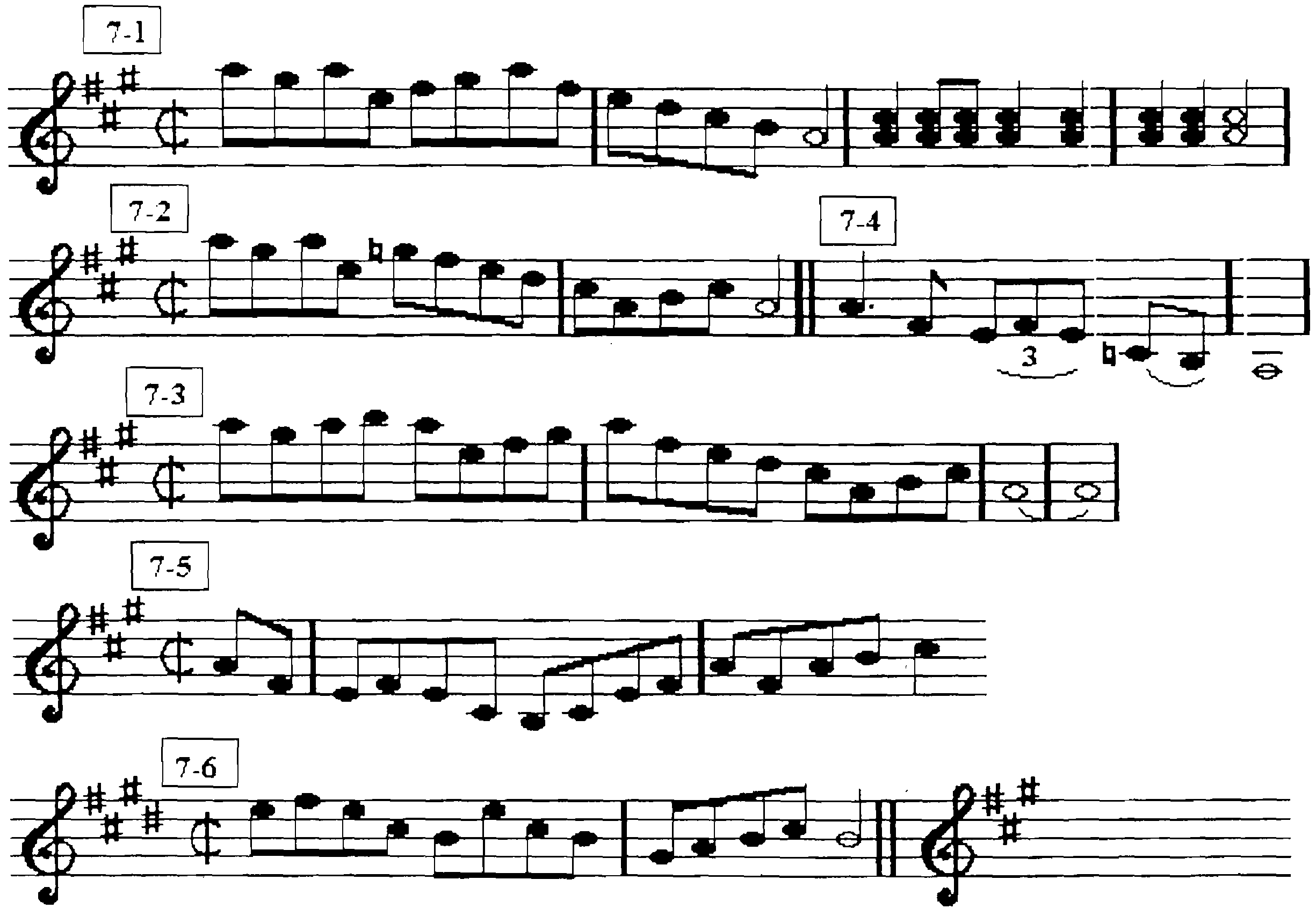Bluegrass Your Fiddle Part 7
Bluegrass Fiddle Tuition by Rick Townend
| Share page | Visit Us On FB |
Bluegrass your Fiddle Part 7
A: the "cliche key"
Of course, there are bluegrass cliches which you can play in G and other keys, but it has been well said that almost the entire repertoire of licks which bluegrass fiddler use to play in the key of A are or will soon become cliched. It's interesting to listen to today's good fiddlers - Stuart Duncan, say, or Alison Krauss - and see how they try to escape this trap!
However, for the purposes of this essay, I intend to go the opposite route and absolutely revel in the well-turned phrases which have added so much to the history and sound of bluegrass fiddle. Starting as usual with the end of a tune. [7-1] gives an ;outro the first two bars of which can also be the first bit of a 'last line' or 'last-two-bars' phrase: examples of these with slight variations are [7-2] and [7-3]. The latter '4 - bar' last line type of phrase is also called a "turn-around', for example where you just have a 'turn-around' for an intro to a song, or short 'turn-around' breaks in for example a gospel number.
Another 'tail-out' phrase is [7-4]; this little phrase can really add a bluegrass flavour to almost anything. Another of these was example [2-2] in 'Bluegrass your Fiddle - Two strings'
The tune Cotton-eyed Joe makes use of a particular bowing and fingering combination [7-5] which turns up again in the standard break for the song Uncle Pen - I wonder if those two ever met up.
A general point I would make is that while the notes A and E on can be played on the open strings or - in first position - with your left little finger (on the D and A strings respectively), it's really useful to be able to play these with equal facility using either or both methods, as at the speed of a lot of bluegrass breaks one is often better than the other for a particular
case. Try using each way on [7-6] - this is actually in E, but in the key of A you'll need to be able to use phrases in D and E to cope with the 'three-chord' numbers which make up the vast bulk of the bluegrass repertoire.
There are some typical double-stops in the key of A, and again for many of these it's good to get used to using your little finger quite a lot. See [7-7] which takes you up in 3rds/4ths from the bottom to as high as is generally useful.
A more modern - say from the 70s at least - cliche is to go up the E string to the octave position: E(open) - A(index) -C#(ring) - E(little finger). Or try coming down the same way: this is how Paul Shelasky's fiddle break to Grey Eagle works in that section [7-8] is the first line of Lime Rock, which Byron Berline popularised as a fiddle contest piece - Bob Winquist tells me that it is now banned from many contests, as it got over-used! Note that this starts at the top, and the first octave E is played as a 'harmonic' -just resting your little finger exactly halfway up the E string to get the note.
Of course it is important to have your own ideas and ways of building up breaks, backup and instrumental numbers, but a good way in to getting the feel of how a bluegrass sound is made is to start a break by playing the tune - many classic bluegrass songs have a simple tune and chords - and then start fitting in some of these standard phrases, as best you can at first, and then using your own judgment as to how you can make the break sound good. [7-9] is a simple-ish break for Worried Man Blues. See if you like this approach - if not, just listen to a few more old bluegrass recordings of numbers in A and find yourself some more cliches!
To buy books Bluegrass Fiddle check the Bluegrass Fiddle Collection at Sheet Music Plus.
You may also be interested in other Bluegrass Related Items on this site:
Playing Bluegrass
Bluegrass Harmony Singing - Tutorial Learning Bluegrass Jamming -Tutorial Learning to play the bluegrass instruments by Rick Townend Bluegrass Your Fiddle, Insiders guide and tutorial on Bluegrass Fiddling by Rick Townend A more complete definition of bluegrass and its background